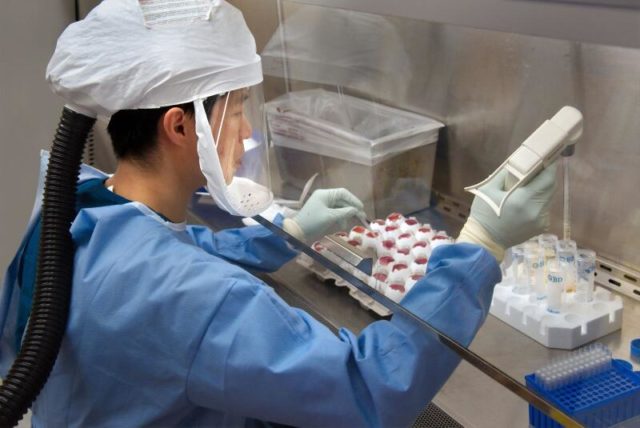South African scientists have been lauded for the discovery of the Omicron variant although this was initially clouded by travel bans.
SOUTH African scientists have been lauded for the discovery of the Omicron variant although this was initially clouded by travel bans.
What is less well known is the role played by Hyrax Bioscience’s software platform, Exatype, in enabling the scale-up of genomic surveillance that led to the detection of Omicron.
Exatype automates the process of characterising variants through its capacity to analyse thousands of viral DNA sequences simultaneously. Automation of the process, which would otherwise need to be conducted manually by a highly skilled bio-informatician in a complex series of steps, is key – finding variants cannot happen without scaling up sample analysis. Exatype makes this possible.
How the software came into being offers important lessons about developing impactful innovations for society. It’s important to reflect on this, partly because South Africa and the rest of African have been criticised for not developing its own vaccines. Being unable to develop its own vaccines was attributed to lack of investment in research and development.
The development of the Exatype software shows that South Africa has done some things correctly in the area of research and development. Here’s how it came into being.
A number of years ago, South Africa, under the Thabo Mbeki presidency, decided to set up Technology Transfer Offices (TTOs) in academic institutions, with the aim of protecting intellectual property and commercialisation of research. In the absence of such offices, universities were struggling to derive economic value from their research, thereby missing out on an opportunity to turn research into something that could benefit society.
One of the TTOs was set up at the University of the Western Cape (UWC). Here, a group of researchers were also working on HIV research. Some of the academics, among them Simon Travers, who were working at the South African National Bioinformatics Institute approached the TTO to get support for a technology that was used in their HIV research.
The academics understood that the technology could be used for health challenges. The process led to the formation of a company, Hyrax Biosciences, which developed Exatype and a software that has been instrumental in discovering the Omnicron variant.
“Exatype removes all the complexities in genetic sequence analysis. It enables laboratories that lack the expertise necessary to undertake manual analysis to perform high throughput genomic surveillance,” says Travers, who is now the chief executive of a spin-off company, Hyrax Biosciences.
“To date, Exatype has been used by laboratories across Africa to analyse the equivalent of 42% of all the data generated on the African continent – that is more than 25,000 Sars-CoV-2 genomes.” he said when asked about the impact of this software.
What’s important to note here is that the Exatype software would not exist today had it not been for the creation of the Technology Transfer Office at UWC.
The offices exist in other universities as well and they have been instrumental in turning academic research into something that can add value to society.
The development of the Exatype software shows what’s possible when research and development are given the necessary support. It also shows a model that needs to be followed to enable research to become reality, and this includes commercialisation.
Today, Hyrax Biosciences operates as a start-up and has headquarters in Cape Town. It is driven by an overriding goal: to automate the analysis and interpretation of pathogen DNA-sequence data.
Exatype, their DNA analysis platform, delivers consistently accurate and clear reporting at scale, without the need for human intervention.
It’s also important to highlight another important element of the existence of this company. Hyrax Biosciences is funded by the University Technology Fund (UTF).
The fund is a venture fund specifically focussed on commercialising technology, intellectual property, and research originating from South African Universities. The UTF, therefore, bridges the gap between technology ideation, research, and intellectual property development and the commercialisation thereof.
The UTF represents a a rare opportunity to catalyse and commercialise the technology transfer industry in South Africa for the benefit of all South Africans.
If South Africa is to develop solutions to some of our major challenges, the support of research and development is key. Also, funding of starting-ups formed in universities is another key element in creating solutions that matter.
There’s a need to create more companies like Hyrax Biosciences. To do that, we would need more innovative and entrepreneurial thinking in academic institutions.
* Wesley Diphoko is the editor-in-chief of Fast Company (South Africa) magazine.








